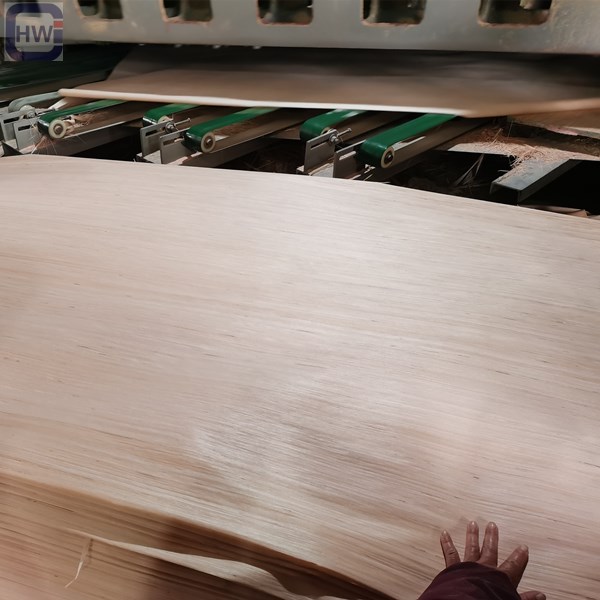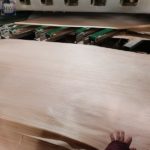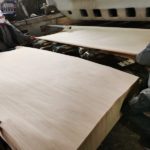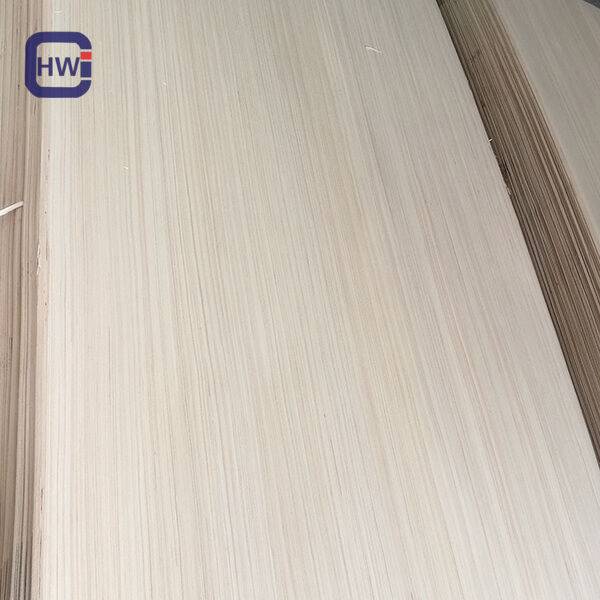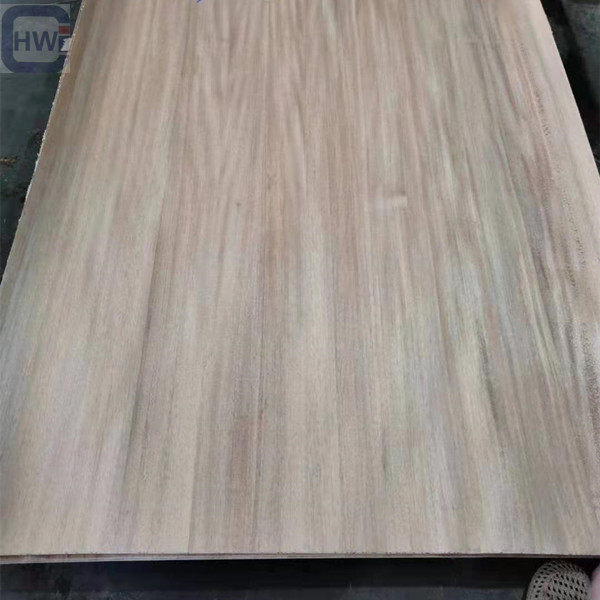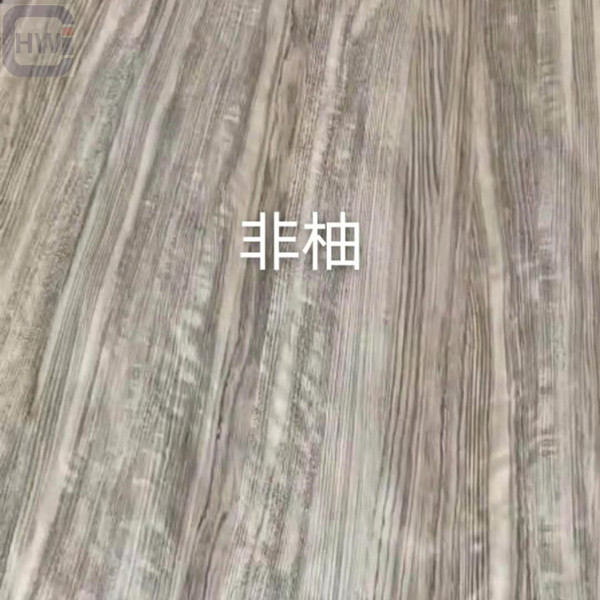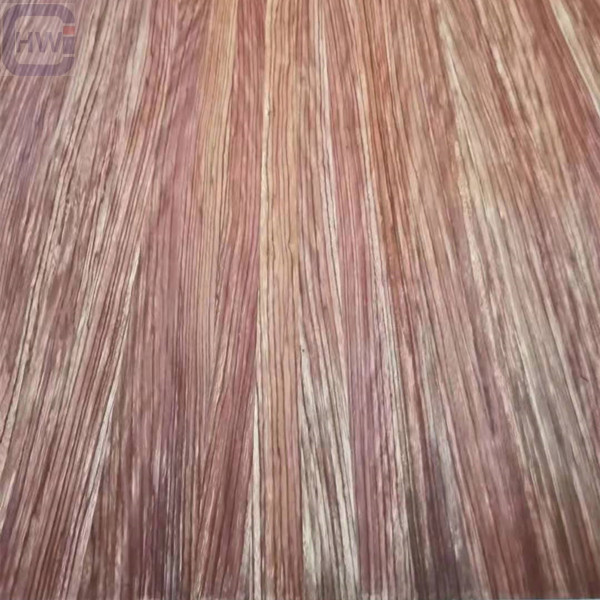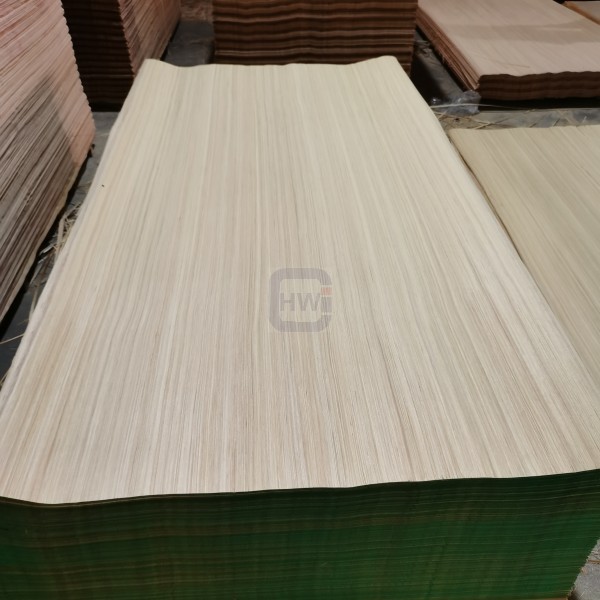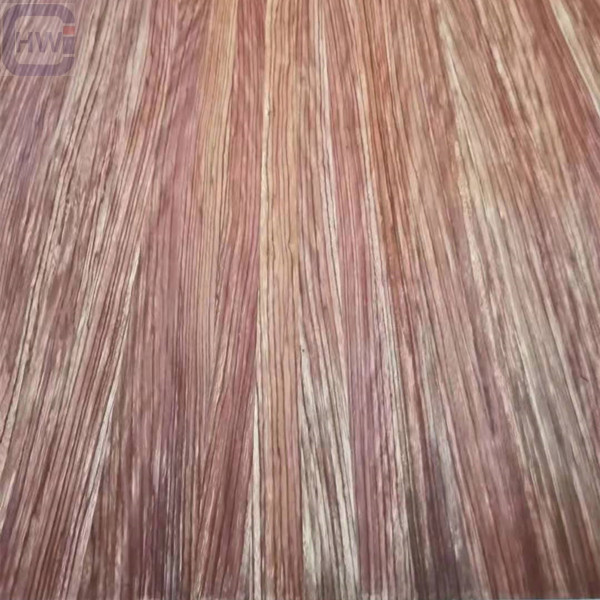Engineered wood veneer/ reconstituted wood veneer/recon veneer
Engineered wood veneer is a type of veneer that is made by bonding thin sheets of wood together using adhesives. It is also known as reconstituted veneer, composite veneer, or man-made veneer.
Unlike natural wood veneers, engineered wood veneers are manufactured and can be produced in a wide variety of colors, patterns, and finishes. They are often used as a cost-effective alternative to natural wood veneers, as they are more consistent in color and grain pattern and can be produced in larger quantities.
Engineered wood veneers are made by slicing or peeling thin sheets of wood from a log or a block of wood. These sheets are then bonded together using adhesives and pressed under heat and pressure to create a solid sheet of veneer. The resulting veneer can be sanded, stained, and finished to mimic the look of natural wood veneer.
Engineered wood veneers are commonly used in furniture, cabinetry, and interior design applications. They offer a more sustainable option than natural wood veneers, as they can be produced using smaller pieces of wood and can be made from fast-growing, renewable species of wood.
Engineered wood veneer Feature
1. Consistency: Engineered wood veneer is made in a controlled environment and therefore offers consistency in color, pattern, and texture.
2. Durability: The bonding process used in engineered wood veneer makes it more durable than natural wood veneer. It is less prone to warping, cracking, and splitting.
3. Cost-effective: Engineered wood veneer is generally less expensive than natural wood veneer due to its manufacturing process and the fact that it can be made from smaller pieces of wood.
4. Versatility: Engineered wood veneer can be produced in a wide range of colors, patterns, and finishes, making it a versatile material for interior design and furniture making.
5. Sustainability: Engineered wood veneer can be made from fast-growing, renewable species of wood, making it a more sustainable option than natural wood veneer.
6. Ease of use: Engineered wood veneer is easier to work with than natural wood veneer due to its consistent thickness and lack of natural imperfections.
7. Availability: Engineered wood veneer is readily available and can be produced in larger quantities than natural wood veneer, making it a good choice for large-scale projects.
Parameters






Product Parameter
| VENEER TYPE | THICKNESS | SIZE | LOADING | DELIVERY | |||
| OKOUME | 0.2/0.25/0.3/0.4/0.55/0.6/0.7MM | 4X8(1280X2560MM) | 40HC | 15-25DAYS | |||
| PENCIL CEDAR | 0.2/0.25/0.3/0.4/0.45MM | 4X8(1280X2560MM) | 40HC | 15-25DAYS | |||
| PLB | 0.25/0.3MM | 4X8(1280X2560MM) | 40HC | 15-25DAYS | |||
| BINTANGOR | 0.2/0.25/0.3/0.4/0.45/0.5MM | 4X8(1280X2560MM) | 40HC | 15-25DAYS | |||
| PINE | 0.5/0.6/0.7/0.8MM | 4X8(1280X2560MM) | 40HC | 15-25DAYS | |||
| EV | 0.2-1.5MM | 4X8(1280X2560MM) | 40HC | 15-25DAYS | |||
| Grade | A, B, C, D | ||||||
| Specification | Grade A: No discolor, No fiber, No hole, No splits Grade B: Slight discolor, small crack, No hole, No fiber Grade C: Medium discolor, Slight pin, bean hole, Light fiber Grade D: Discolor, splits, egg-size holes no more than 3 |
||||||
|
Moisture |
8-12% | ||||||
| Lead time | 10-25days after the deposit received | ||||||
| Shipping terms: | FOB, CNF, CIF | ||||||
| Package: | Standard Seaworthy packing | ||||||
| Inner Packing: The pallet is wrapped with a 0.20mm plastic paper | |||||||
| Outer Packing: The pallet is covered with plywood or carton and then PVC/steel tapes for strength | |||||||
| Also, 6*3 metal belt | |||||||
| products samples | For free samples, need to pay the delivery fees by 1-2 days for ready samples, customized for 15 days. |
| After-sales services | After receiving goods, if any quality problem, take photos and send them to us. Then provide you free boards to replace in the next order after checking. |
| Product customization | no strict requirement about the size, but the tailored way should be basic on the basic material’ size. |
Product Show






Application
Plywood, Doorskin, Furniture, Decoration, Kitchen, Cabinet, Flooring, Construction, etc.

About the company
1. HW Group is your plywood manufacturer in China which can produce customized products with professional technology.
2. OUR MISSION is endless innovation, providing customers with high-quality products and services.
3. CERTIFICATION: CE, ISO, FSC, ASNZS, CARB/EPA
4. MAIN PRODUCTS: Thin Plywood, Furniture Grade plywood, Commercial Plywood, Film faced plywood, Fancy Plywood, LVL, and so on
5. CAPACITY Factory was established in 2002, located in Pizhou City, Jiangsu Province, covering
30,000 square meters, has 200 workers with 50.000CBM/year capacity, exports 1000 containers per year
6. ADVANTAGE 1)Professionalmanufacture technology and strong global resource meet your various demands. 2)Perfect and independent inspection system 3)Owner equips very fluent spoken English will further promote strategic partnership building between the two sides. 4)Honest and trustworthy. Responsible until after-sales.
7. MAIN MARKET Europe, America, Australia, Middle East, Asia, and Africa.
8. SERVICE HW has a sales team, docs team, quality inspection team, and logistics team
Mark:
EV veneers also named reconstituted veneers laminated plywood
is one of our best-selling furniture grade of boards. We usually
recommend customers for the Poplar core, combi core, and eucalyptus
core strive for high-end quality products. surface species can
be a lot of different series, like oak, teak, poplar, cherry, and so on,
and we are working with several big mills of recon veneers producer
for multichoice. and this product is ideal for the furniture grade and
countertop material first choice

FAQ
Q: What is engineered wood veneer?
A: Engineered wood veneer is a type of veneer that is made by bonding thin sheets of wood together using adhesives. It is also known as reconstituted veneer, composite veneer, or man-made veneer.
Q: How is engineered wood veneer made?
A: Engineered wood veneer is made by slicing or peeling thin sheets of wood from a log or a block of wood. These sheets are then bonded together using adhesives and pressed under heat and pressure to create a solid sheet of veneer.
Q: What are the advantages of using engineered wood veneer?
A: Engineered wood veneer offers consistency in color, pattern, and texture, is more durable than natural wood veneer, and is cost-effective, versatile, sustainable, and easy to use.
Q: What are the applications of engineered wood veneers?
A: Engineered wood veneer is commonly used in furniture, cabinetry, and interior design applications.
Q: How does engineered wood veneer compare to natural wood veneer?
A: Engineered wood veneer is generally less expensive than natural wood veneer, offers more consistency in color and pattern, and is more durable. Natural wood veneer, on the other hand, offers a more authentic look and feel.

